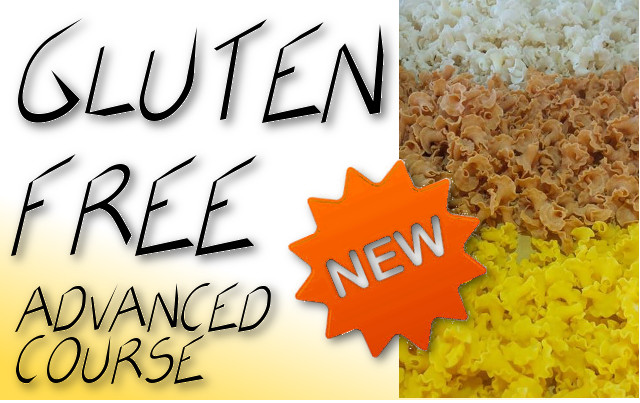
Date of minimum durability: should it be eliminated from dried pasta labels?
28 August 2014The delegations from a number of European Union countries have proposed that the “best used by” wording should be eliminated from the packaging of a number of food products, including dried pasta
The label is a food’s ID card: it provides a series of information about the product and gives facts about the “use-by” date and proper preservation of a given food.
However, over the next few months, things could change. The European Union has, in fact, proposed a revision of food product use-by labels to eliminate the wording “best used by” on packages of products such as pasta, rice, coffee and hard cheeses.
This proposal, which aims at limiting the problem of food loss and waste in Europe, was put forward by the Dutch and Swedish delegations, and has already won the support of Austria, Germany, Denmark and Luxembourg.
There have been many reactions in Italy to this proposal, but all have shown an underlying doubt regarding the actual possibility of solving the problem of food waste in this way and, at the same time, also preserving the quality of successful products, such as pasta, for example.
The first to put the brakes on the introduction of EU standards was the Italian Minister of Agricultural Food and Forestry Policies Maurizio Martina, himself, who stated: “We are very cautious. We accept the debate and want to examine it in depth, but we are just as aware that these means guarantee the quality of food products.”
And it is the safety of products and their organoleptic qualities that Italian pasta-makers also refer to, because they wish to continue to offer consumers flavorful, high-quality foods.
“Identifying practical solutions that make it possible to combat food waste and loss has always been one of the goals of the pasta manufacturers we represent,” declares AIDEPI, the Italian Association of Confectionery and Pasta Industries. “However, when speaking of the amount of food beyond its use-by date that every Italian family is forced to throw away each year, it involves, above all, perishable products with very short use-by dates, or those which must be kept under temperature control. Currently, only a few food products have a use-by date set by law while, for all other products, the period is set independently by the manufacturers themselves on the basis of a series of factors. Pasta durability, for example, is 36 months, or 24 if it contains egg. A very long period.”
“There is still a lot of confusion,” AIDEPI continues, “between the Date of Minimum Durability expressed with the ‘best used by’ wording, and the expiration date, i.e., the date within which the food is suitable for consumption if stored under the proper conditions, which is only envisaged for perishable foods (fresh milk). Only when the latter date is exceeded is there a serious health risk while, for the former, there could be changes in the taste, smell, fragrance or color of a food. It is probable that completely eliminating the Date of Minimum Durability would confuse consumers even more and they could unconsciously waste a food just because it was purchased some time ago.”
The European Union proposal is based, therefore, on the fact that the term “best” does not provide concrete information and that the consumer, if in doubt, would choose to throw out the product. On the other hand, it is truly important that a term be maintained which indicates that these properties have remained intact, thus providing consumers with clear, transparent information.
Are we sure, in fact, that by omitting this indication, the consumer will not throw out the food even earlier, thus resulting in the opposite effect and increasing the problem of food waste?
When speaking of the problem of food waste, however, reference must also be made to the environment and search for solutions that also improve the impact of CO2 emissions of the main agricultural raw materials used. This is an issue in which AIDEPI is also very involved.
“We recently presented the First Sustainability Report for this sector, which can be downloaded free-of-charge from the AIDEPI website (http:// http://www.aidepi.it/images/PDFscaricabili/rapp_sost_2013_rev_2_giugno2014.pdf),” AIDEPI notes. “A work whose goal is to bring together and analyze data that make it possible to set new goals for improving environmental performance in the medium-to-long term. This report allowed us to focus attention on the impacts each step in production and processing has on the environment. With some surprises. For example, it emerged that the highest impact regarding pasta is that related to the home. In fact, in preparing a plate of pasta, the environmental impact is 38% compared with 37% from raw materials, 15% from processing, 6% from producing packaging and 4% from distribution. The ecological footprint of an 80g portion of pasta is minimal, equal to 1 m² overall. Also in terms of water consumption, pasta is in the vanguard. For example, to produce a kilogram of pasta, a pasta manufacturer uses no more than 3 liters of water. So, even the decision to eat a plate of pasta means choosing a food product that fully respects the environment.”
The dish that is the king of the Mediterranean Diet is also sustainable in terms of packaging. For packing pasta, companies use materials that are easily—if not totally—recyclable, such as cardboard or the classic plastic wrapper.
In addition, in many cases, the packages have been designed to help consumers properly dispose of the packaging, with instructions on the label, including symbols and graphic references.
Download the magazine, it’s free!
 PASTARIA DE (digital edition) 2014 n. 4 (ITALIANO) (15.8 MiB, 1,699 download)
PASTARIA DE (digital edition) 2014 n. 4 (ITALIANO) (15.8 MiB, 1,699 download)
Registrazione necessaria. Sign-up to download.
 PASTARIA INTERNATIONAL DE (digital edition) 2014 no. 4 (ENGLISH) (14.5 MiB, 1,943 download)
PASTARIA INTERNATIONAL DE (digital edition) 2014 no. 4 (ENGLISH) (14.5 MiB, 1,943 download)
Registrazione necessaria. Sign-up to download.
[/hidepost]


